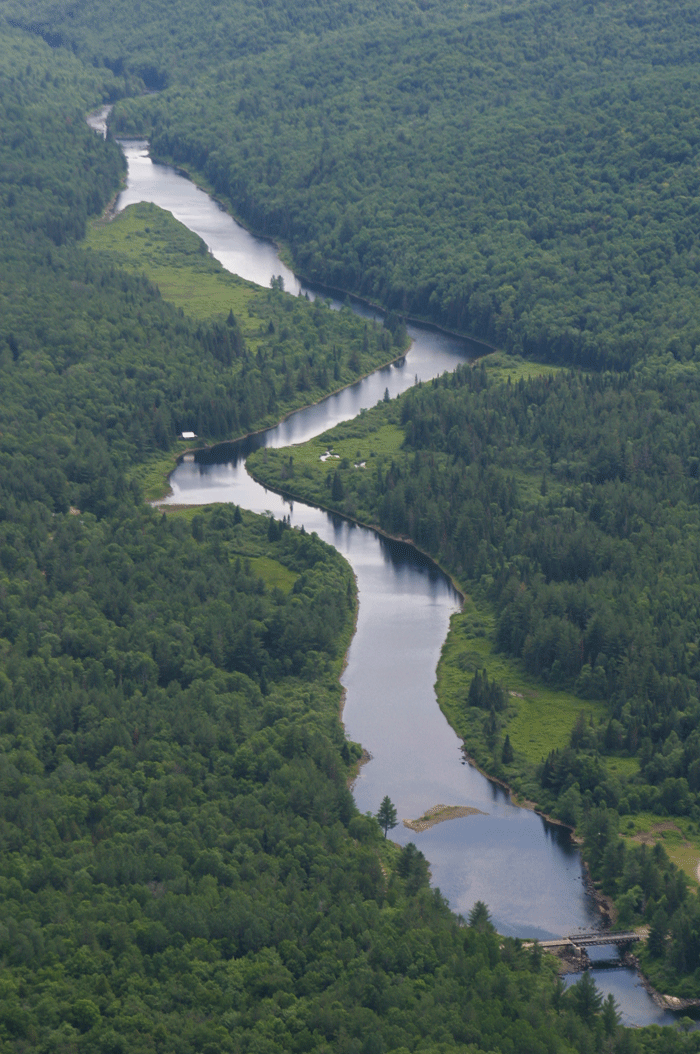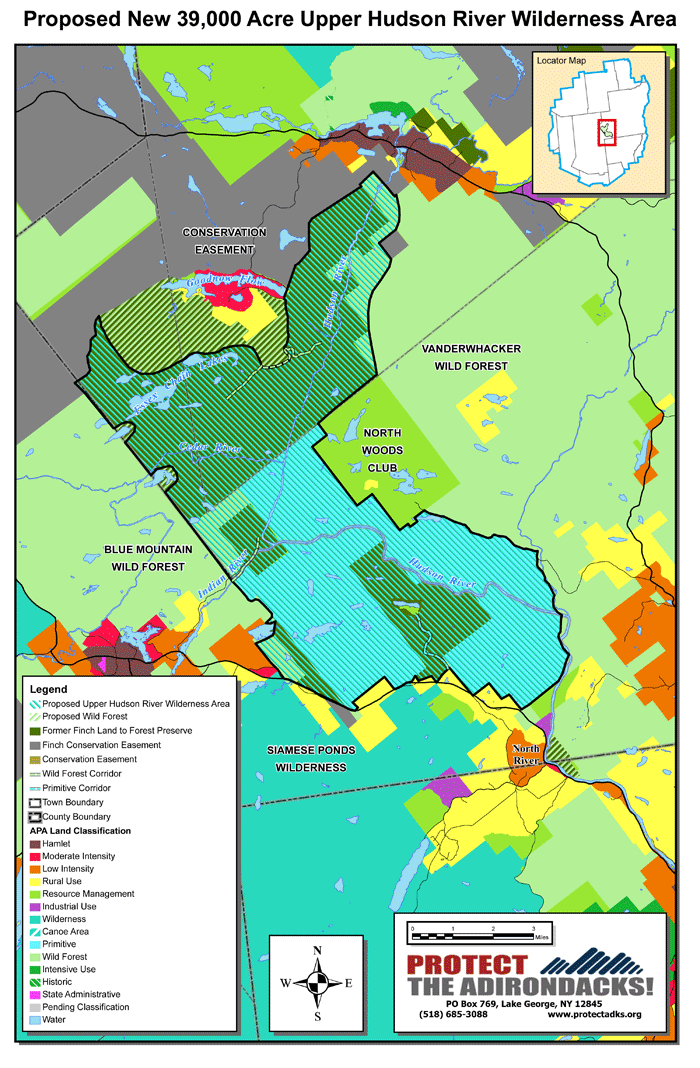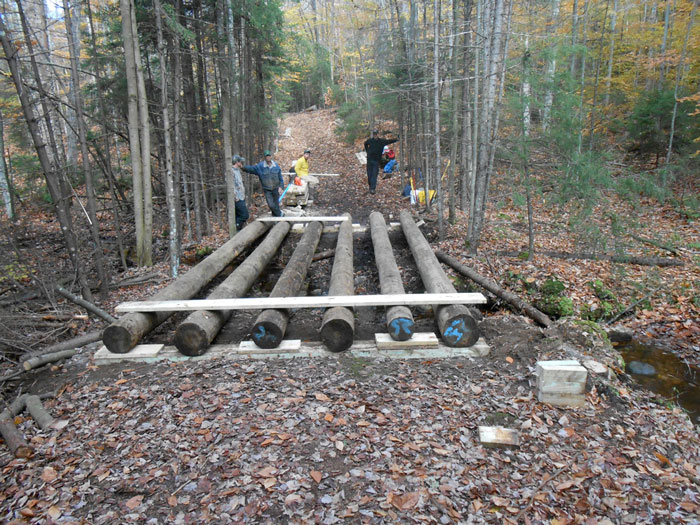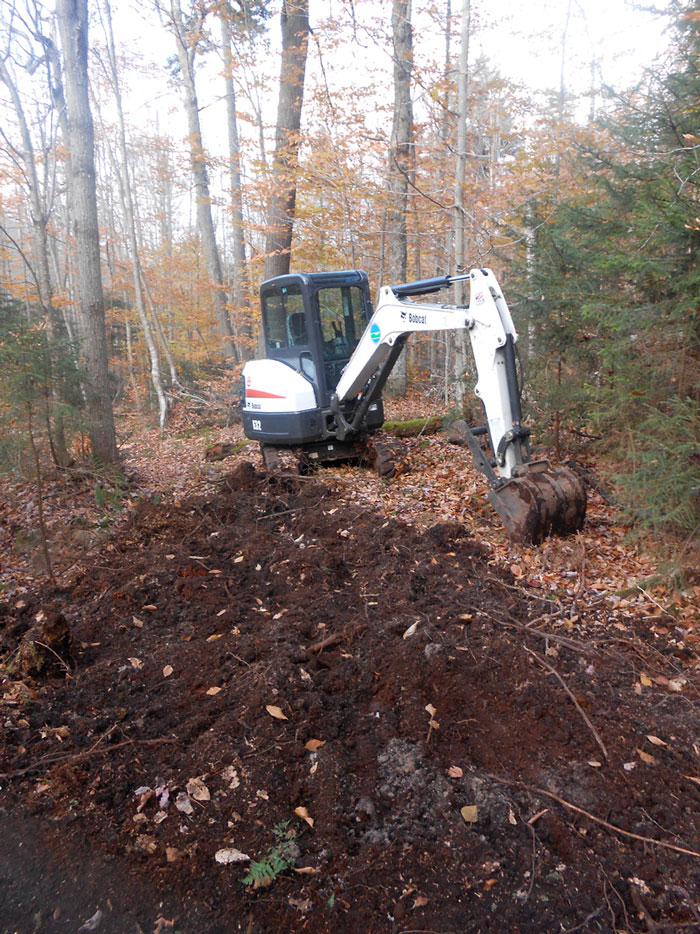Protect the Adirondacks was fully engaged in a variety of issues across the Adirondack Park in 2012. PROTECT worked effectively to defend the Forest Preserve, advocate for open space protection, lead the way in water quality science, took a courageous stand against political influence and undermining of state law in land use regulation, and hired key staff, among many other things. The Board of citizen advocates and staff worked hard on a range of issues. It all added up to a big year for PROTECT in 2012.
Here is PROTECT’s Top 10 list of highlights for 2012.
1. Legal Action to Defend Park’s Private Lands Against a Terrible Precedent for Forest Fragmentation
In March, PROTECT launched a legal challenge to the decision by the Adirondack Park Agency (APA) to approve a series of new permits for the 6,000-acre Adirondack Club & Resort (ACR) project in Tupper Lake. PROTECT made the decision to take this legal action because we found numerous procedural and legal irregularities in the way that the APA made the decision to approve this project. We also believe that there was improper political influence brought to bear on decision-makers and leadership at the APA.
While many have attempted to portray this legal action as some kind of assault on the future of Tupper Lake, PROTECT sees this lawsuit as about the future of the Adirondack Park because if this ruinous legal precedent stands it imperils hundreds of thousands of acres of private lands in the Park. PROTECT undertook this action because it was the right thing to do for the future of the Adirondacks.
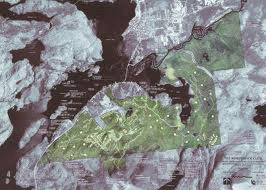 While we have weathered a battering from ACR boosters, PROTECT has sought to set the record straight about this lawsuit. Read an excellent point-counter point in the Adirondack Explorer and op-eds about the importance and substance of this lawsuit here and here as well as about a new related PROTECT lawsuit in December over the APA’s decision to withhold information. PROTECT’s lawsuit against the APA over the ACR approvals is about important and substantial issues.
While we have weathered a battering from ACR boosters, PROTECT has sought to set the record straight about this lawsuit. Read an excellent point-counter point in the Adirondack Explorer and op-eds about the importance and substance of this lawsuit here and here as well as about a new related PROTECT lawsuit in December over the APA’s decision to withhold information. PROTECT’s lawsuit against the APA over the ACR approvals is about important and substantial issues.
The media tracked this story. The Times Union takes a hard look at PROTECT’s motion for discovery concerning ex parte communications. NCPR reports on PROTECT’s motion for full discovery in APA-ACR lawsuit. The Daily Enterprise posts the press release with a few comments and also filed a news report. Phil Brown writes about the PROTECT-Sierra motion too. The Capitol Confidential weighs in. Jessica Collier of the Daily Enterprise wrote about PROTECT’s ex parte allegations as part of its Reply in the APA-ACR Lawsuit. The Inbox also covered the exparte allegations. The Syracuse Post Standard takes a look at PROTECT’s lawsuit against the APA and the New York Times covered the controversial decision by the APA to approve this project.
PROTECT remains committed to this lawsuit and is confident in its ultimate success. We expect a decision in 2013.
2. After Successful PROTECT and ADK Legal Action, APA and DEC Fold their Case and Lows Lake will be Managed as Wilderness
PROTECT worked throughout the year to defend the Forest Preserve against mismanagement and abuse, largely from inappropriate motorized recreational use. In August 2011, the state Supreme Court ruled that Lows Lake is Wilderness and the state must manage it as such. On June 8, 2012 the state Attorney General’s Office, which represents the Department of Environmental Conservation (DEC) and APA, filed a formal withdrawal of its appeal of Justice Lynch’s decision, bringing the matter to a close. This was a big victory for PROTECT and its co-plaintiff the Adirondack Mountain Club (ADK).
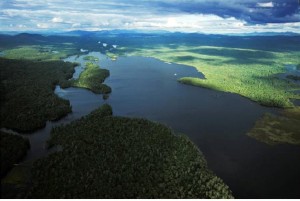 In the 2011 decision, the Supreme Court Justice ruled that the APA erred when it approved a resolution in November 2009 that left the popular canoe route unclassified. Supreme Court Justice Lynch also noted that Lows Lake was included in a 1987 Wilderness classification of about 9,100 acres, a classification that was signed by then-Governor Mario Cuomo. The decision not only confirmed that Lows Lake has been Wilderness for a quarter century, it upheld the principle that the APA has a legal obligation to classify water bodies that are part of the Adirondack Forest Preserve.
In the 2011 decision, the Supreme Court Justice ruled that the APA erred when it approved a resolution in November 2009 that left the popular canoe route unclassified. Supreme Court Justice Lynch also noted that Lows Lake was included in a 1987 Wilderness classification of about 9,100 acres, a classification that was signed by then-Governor Mario Cuomo. The decision not only confirmed that Lows Lake has been Wilderness for a quarter century, it upheld the principle that the APA has a legal obligation to classify water bodies that are part of the Adirondack Forest Preserve.
PROTECT will followup in 2013 with DEC and APA to classify other waterbodies as Wilderness as a result of this court case.
3. Land Protection Advocacy
In August, Governor Cuomo committed to protecting as new Forest Preserve lands 69,000 acres of former Finch, Pruyn & Company lands purchased five years ago by The Nature Conservancy. This deal would not been possible without the tremendous work of the Adirondack Chapter of The Nature Conservancy and Land Trust. PROTECT salutes all their fine work!
The Governor made his positive announcement in August that the state would buy 69,000 acres from TNC over the next five years. The new lands contain the Boreas Ponds, flanks of Santanoni Mountain, long stretch of the Opalescent River, the Essex Chain Lakes, and long stretches of the Upper Hudson River (see below) as well as the Blue Ledges and the Hudson River Gorge. This acquisition is one of the great moments in Adirondack Park history.
In the spring and summer of 2012, PROTECT and other groups teamed up on an online petition (see below) to urge Governor Cuomo to commit to state purchase for the Forest Preserve. Over 5,000 people signed this petition to the Governor. TNC had shepherded a deal previously that resulted in over 90,000 acres of former Finch lands being protected as conservation easements.
PROTECT also went to bat for the state purchase of 69,000 acres for the Forest Preserve and pointed out the many ways that this deal benefits the Adirondack Park and its residents; read more here and here. Last, treat yourself to a photographic tour of these spectacular lands.
Governor Cuomo also visited the Boreas Ponds in September, the heart of the TNC-Finch lands deal. See press reports in the Times Union, NCPR, Press Republican, the New York Times and Wall Street Journal. Also, see a video of the Governor’s press conference from the shores of the Boreas Ponds.
4. PROTECT Advocates for a New Upper Hudson River Wilderness Area
PROTECT advocated strongly for a new Upper Hudson River Wilderness area in 2012. PROTECT put together a proposal based on re-classifying existing Forest Preserve lands with newly purchased lands. PROTECT advocated for classifying over 20,000 acres of the new TNC lands around the Essex Chain Lakes and along the Hudson River with around 20,000 acres of existing Forest Preserve classified as Primitive and Wild Forest into a new consolidated Wilderness Area. PROTECT is calling for the creation of a new 39,000-acre Upper Hudson River Wilderness Area (see map below).
The media ran with this story. Listen to a report on WAMC public radio about PROTECT’s proposal for a new Upper Hudson River Wilderness Area. Listen to Brian Mann’s report on NCPR too. See more news reports in the Troy Record, Press Republican, Adirondack Daily Enterprise, two pieces in the Adirondack Almanack here and here, and the Daily Gazette.
PROTECT will advocate for formal classification of this new wilderness area in 2013.
5. PROTECT Opposed New Snowmobile “Trail” Network Building Boom
The APA and DEC have embarked upon a new snowmobile trail building boom in the Forest Preserve across the Adirondack Park. PROTECT has monitored the building of these new “trails” and finds that they look more like roads than trails. At least three of these new snowmobile “trails” were built in 2012, with the longest being in the Moose River Plains. It runs 12 miles from the Cedar River-Limekiln Lake Road to the Sagamore Road to connect the hamlet of Raquette Lake to Inlet and Indian Lake.
These snowmobile “trails” have been approved and designed as “community connector class II snowmobile trails” under the Snowmobile Plan for the Adirondacks that the DEC unilaterally approved in 2006. The two predecessor organizations to PROTECT opposed the Snowmobile Plan. There are many parts of the DEC’s Snowmobile Plan that violate the Adirondack Park State Land Master Plan (SLMP). The SLMP states that snowmobile trails should be the “character of a foot trail” and that the only motor vehicle allowed on a snowmobile trail is a snowmobile. These new “trails” violate both of these requirements, among many others.
Rather than going through the public debate and scrutiny over revising the SLMP, the DEC and APA conspired to pass a “Guidance” document that states these oversized “trails” comply with the SLMP. PROTECT opposed the “Guidance” when it was adopted.
There is no way this new community connector class II snowmobile “trails” (as shown in the pictures above from “trail” construction in the Moose River Plains) bears any rational resemblance to something having the “character of a foot trail.” The “trail” surface has been graded, leveled, and flattened by a nine-thousand-pound excavator. Extensive bench cuts were dug into side slopes that parallel the “trail” in many sections for a hundred yards, protruding rocks removed, extensive tree cutting done, all understory vegetation removed, and oversized bridges built to support multi-ton groomers. Ledge rock was fractured and split apart, trail surface scarred by 6-wheel ATVs that made deep wheel ruts, and extensive amounts of crushed gravel used. Bridges have been outfitted with plastic reflectors for night-time driving.
A “foot trail” is where people walk single file. They step over roots and rocks. The trail surface is uneven and follows the terrain. There are scarcely any stumps of cut trees. Vegetation on the side often encroaches, and the trail is canopy covered. Steppingstones and split logs are commonly used to pass over streams and wet areas. There are no reflectors.
These new snowmobile trails are designed and built this way to support large multi-ton tracked groomers. The SLMP prohibits the use of these motor vehicles on snowmobile trails, yet the APA and DEC have authorized their use.
PROTECT is currently evaluating all options to stop this new snowmobile “trail” construction building boom that is detrimental to the Forest Preserve and this work will continue in 2013.
6. 2012 Marks 15th Year that PROTECT has Partnered with Paul Smith’s College on the Largest Water Quality Monitoring Program in the Adirondacks
2012 marked the 15th year of a special partnership between PROTECT and the Adirondack Watershed Institute at Paul Smith’s College for the Adirondack Lakes Assessment Program (ALAP). This program has grown to be the largest scientific water quality monitoring program in the Adirondack Park. ALAP was established in 1998 to help develop a comprehensive and up-to-date database of water quality conditions in the Park. 69 lakes and ponds were studied in 2012.

ALAP volunteer Bob Manning and his son takes samples from Garnet Lake in the Town of Johnsburg and Thurman. Samples are taken from the 2 meter tube, and placed into a bottle in a cooler. A Secchi disc is used to record clarity depth, which is an important water quality indicator.
ALAP is a program built on the work of trained volunteers. Over 100 volunteers worked on ALAP in 2012. 13 leading water quality indicators and analytes are studied in ALAP. This program looks at long-term changes to water quality driven by land use impacts. ALAP data provided important information for a major salt pollution study published in 2010.
PROTECT plans to expand ALAP in 2013.
7. PROTECT takes a Stand for Bobcats
The DEC has published a new final Management Plan for Bobcats in New York in October 2012. PROTECT opposed the draft plan in the spring of 2012 and finds that the final plan is just as bad as the draft plan. DEC plans to move ahead with developing new rules and regulations that would increase the number of bobcats that trappers and hunters are allowed to take each season and expand areas in the state where bobcat hunting is allowed. These new rules will be in effect prior to the fall 2013 hunting season.
 PROTECT opposes implementation of the “Management Plan for Bobcat in New York State 2012-2017” because it is not based on a “scientifically sound” study of the state’s bobcat population, as required by the DEC Bureau of Wildlife’s own mission statement. PROTECT asked that such a study be completed before any further plan to manage bobcat is considered. DEC ignored this request.
PROTECT opposes implementation of the “Management Plan for Bobcat in New York State 2012-2017” because it is not based on a “scientifically sound” study of the state’s bobcat population, as required by the DEC Bureau of Wildlife’s own mission statement. PROTECT asked that such a study be completed before any further plan to manage bobcat is considered. DEC ignored this request.
The DEC “study” about the need to make changes to bobcat hunting only solicited trappers and small game hunters to gain preliminary input regarding the future management of the bobcat species, according to its own admission. DEC is using this data as the entire base of their plan to manage the bobcat “resource”. This is simply bad science. This research promotes a skewed approach to data collection: by their own admission this data is misleading because trapping efforts vary greatly with factors such as pelt prices and environmental factors. In addition few hunters have the skills or inclination to hunt bobcat, meaning that hunting results are not statistically reliable when such small numbers are involved.
The DEC provides information on the bobcat plan here and a response to public hearing comments here. DEC’s “Response” document is exceptionally weak. Over 1,500 public comments were filed and over 80% opposed an expansion bobcat hunting in New York.
PROTECT believes that good science and good data leads to good public policy. No science leads to policy made by anecdote and the wants of special interests. PROTECT will work to stop the expansion of the bobcat hunting program in 2013.
8. PROTECT takes a Stand Against Clearcutting of Adirondack Forests
In the fall, PROTECT rallied its members to oppose a new draft policy at the APA to ease the rules for clearcutting forests in the Adirondack Park. PROTECT sees these new rules as a step backwards for forest management.
What is truly disturbing is that the APA provided no data or analysis, or any kind of research, to substantiate and justify the need for this new policy. This was purely an anecdote-driven process as opposed to a data-driven process.
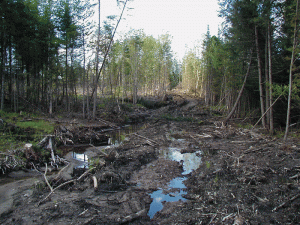
The APA has proposed a new draft General Permit to loosen rules for clearcutting commercial forest lands in the Adirondack Park. APA opposes this new policy.
The essence of the Adirondack Park is that it’s a landscape of continuous high forest canopy. As one moves across the Adirondack Park from Forest Preserve to conservation easement lands to large private landholdings, the Park is defined by continuous, largely unbroken high forests. PROTECT believes that a decision by the APA to significantly loosen clearcutting rules will have wide ranging implications for long-term forest management in the Adirondack Park as well as seriously undermine public support for the state Conservation Easement program, among other negative consequences.
PROTECT has called upon the APA to table this new general permit until adequate research has been undertaken as an initial step when it meets in early 2013. PROTECT will strongly oppose any weakening of clearcutting laws in the Adirondack Park.
9. PROTECT Salutes New Focus on the Adirondack Park, Forest Preserve, and Sustainability as Important Assets and Cores Values to Build a Viable Economic Future for the Adirondacks, which Moved Debate Away from Tired “Blame-the-Park” Politics of Yore
Several new efforts that focus on building a viable Adirondack economy and viable Adirondack communities have come together in recent years, but 2012 was a real watershed. For decades before this the Adirondack Park and the Forest Preserve were held up as obstacles to economic and community development opportunities. The main economic development strategy was to “blame the Park” and call for the abolition of the APA. Great lengths were taken to substantiate this position.
The weak and politically driven Adirondack Park Regional Assessment Program (APRAP) was the ultimate work in the blame-the-park orthodoxy. PROTECT dissected the abundant misinformation in this work.
PROTECT welcomes the Adirondack Futures as a project that is working to build support for a vision for the Adirondacks that was built through a variety of public workshops. This has moved the economic development conversation to a focus on how to build upon the Adirondack Park and Forest Preserve as core assets rather than obstacles to somehow overcome.
In addition to the Adirondack Futures work, two other efforts are important to highlight for their possibilities. The first is ANCA’s Cleaner-Greener-Communities project, which is building a sustainability plan for the Adirondacks and North Country of New York. This will conserve energy and maximize our financial resources. The second is the work of ADKCAP — Adirondack Climate & Energy Action Planning — which has sharpened the discussion and planning on the long-term economic importance of climate change and energy use for Adirondack communities.
PROTECT looks forward to supporting these efforts in 2013.
10. PROTECT Makes Major Organizational Changes to Heighten Focus on Advocacy, Research, Education, Legal Action and Grassroots Organizing to Protect and Defend the Adirondack Park
2012 saw major growth and changes for PROTECT. The points above clearly show an organization with wide involvement and impact across the Adirondack Park. PROTECT is pleased with its growth this past year.
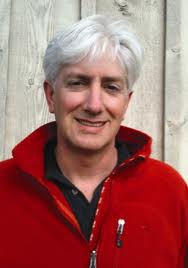 PROTECT is pleased to begin regular publication of The Park Report, our newsletter as well as making numerous posts to the website through the Adirondack Issues Blog and Mountain Mix. PROTECT has also released new Action Alerts and online petitions.
PROTECT is pleased to begin regular publication of The Park Report, our newsletter as well as making numerous posts to the website through the Adirondack Issues Blog and Mountain Mix. PROTECT has also released new Action Alerts and online petitions.
PROTECT transferred the Center for the Forest Preserve in Niskayuna to Union College, which has created the Kelly Adirondack Center to anchor a new Adirondack Studies focus.
PROTECT is also pleased with the hiring of Peter Bauer as its new Executive Director in September 2012. Peter brings a long history of Adirondack professional experiences, policy, advocacy and grassroots organizing to his new work with PROTECT.
PROTECT is led by the strongest and most knowledgeable Board of Directors in the Adirondacks. Charles “Chuck” Clusen is the current Chair. He resides in Washington, D.C. and Hull Pond near Paul Smith’s. Three Vice-Chairs include Lorraine Duvall from Keene, Dale Jeffers from Slingerlands, and Michael Wilson from Saranac Lake and Raquette Lake. David Quinn from Saratoga Springs is the Treasurer and Ken Strike from Thendara is Secretary.
Additional Board members include Nancy Bernstein, Vermontville; Anya Bickford, Indian Lake; John W. Caffry, Glens Falls; Dean Cook, Ticonderoga; John W. Douglas, Jr, Pittsburgh, PA; Mary Lou Doulin, Hague; Robert C. Glennon, Ray Brook; Evelyn Greene, North Creek; Sid Harring, Mayfield; Bob Harrison, Brant Lake; Bill Healy, Ballston Lake; Peter Hornbeck, Olmstedville; Maryde King, Niskayuna; Charles C. Morrison, Saratoga Springs; Peter O’Shea, Fine; Marilyn Sargent, Edinburg; Abbie S. Verner, Schenectady and Long Lake; Michael Wilson, Saranac Lake and Raquette Lake.
PROTECT manages a Conservation Action Committee (CAC), which is where all positions are researched and vetted. The CAC makes recommendations to the full Board. PROTECT also manages an active Research Committee.
PROTECT Board members are all citizen advocates. The Board and staff of PROTECT look forward to greater successes in defense of a wild Adirondack Park and continued organizational growth in 2013.
PROTECT remains truly grateful to all its supporters who helped with financial donations or volunteered with our programs. We have much to be proud about in 2012 and great challenges ahead in 2013.

